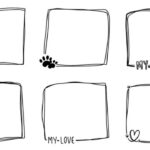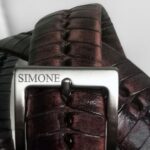I. Introduction to Upcycled DJ Booths: Benefits of Using Second-Hand Gear
II. Essential Components for Crafting Your Custom DJ Setup
III. Tips for Sourcing, Refurbishing, and Assembling Used DJ Equipment
Introduction to Upcycled DJ Booths: Benefits of Using Second-Hand Gear
As a DJ, the quest for the perfect setup can sometimes feel overwhelming. With so many options and price points, it’s easy to get lost in the maze of shiny new gear. But have you ever considered the magic of upcycling? Using second-hand DJ equipment not only helps you create a unique and personalized booth but also brings a host of benefits that can enhance your overall experience. Let’s dive into why upcycled DJ booths are worth your time and attention!
1. Cost-Effective Solutions
One of the most significant advantages of opting for second-hand gear is the cost savings. New DJ equipment can set you back quite a bit, especially if you’re aiming for high-quality products. By choosing to upcycle, you can find fantastic deals on gear that’s just as functional and often just as stylish. Think of it as a treasure hunt! You never know when you might stumble upon a vintage turntable or a powerful mixer at a fraction of its original price.
2. Environmental Impact
In today’s world, being environmentally conscious has never been more crucial. By upcycling, you’re actively contributing to reducing waste and promoting sustainability. Instead of adding to the landfill, you’re giving new life to equipment that still has plenty of beats left in it. It’s a win-win situation: you get awesome gear while helping the planet. Plus, it feels great to know your DJ booth is eco-friendly!
3. Unique Aesthetic
When you upcycle, you’re not just buying equipment; you’re curating a collection that tells a story. Each piece of used gear carries its own history and character, allowing you to create a booth that stands out from the crowd. Want a retro vibe? Look for those classic mixers and turntables. Prefer a more eclectic feel? Mix and match different styles and colors! The beauty of second-hand gear is that it can reflect your unique personality and artistic vision.
4. Opportunity for Customization
Going the second-hand route opens up a world of opportunities for customization. When you purchase brand new equipment, you often have to stick to the manufacturer’s design and features. However, with used gear, you can modify and personalize your setup to suit your taste and needs. Want to change the knobs, add LED lights, or even paint the case? Go for it! You have the freedom to express yourself creatively in a way that’s simply not possible with factory-made gear.
5. Learning Experience
Finally, sourcing and refurbishing second-hand equipment can be an educational journey. It’s a hands-on experience that allows you to understand your gear better, develop technical skills, and learn about the inner workings of DJ equipment. You’ll become more adept at troubleshooting issues, which is an invaluable skill for any DJ. Plus, you’ll appreciate your setup even more because you’ve invested time and effort into making it uniquely yours.
In Conclusion
Upcycling your DJ booth is not just about saving money; it’s about embracing creativity, sustainability, and individuality. With the right mindset, you can transform used gear into an amazing setup that’s both functional and fabulous. So, why not embark on this exciting journey? Dive into the world of second-hand DJ equipment, and let your creativity flow!
Essential Components for Crafting Your Custom DJ Setup
So, you’ve decided to dive into the exciting world of DJing, and you want to create a custom setup that reflects your unique style. That’s fantastic! But before you start hitting up garage sales and thrift stores for second-hand gear, let’s break down the essential components you’ll need to get spinning like a pro.
1. DJ Controller
Your DJ controller is the heart of your setup. It allows you to manipulate tracks, control volume, and add effects. When choosing a controller, consider the following:
- Compatibility: Ensure it works with your preferred DJ software.
- Features: Look for jog wheels, faders, and pads that suit your style.
- Size: If you plan on performing live, a portable option might be best.
2. Mixer
A good mixer is crucial for blending tracks and managing audio levels. If you go the used route, check for:
- Condition: Look for wear on knobs and faders.
- Number of channels: More channels give you flexibility for mixing multiple sources.
- Effects: Built-in effects can add flavor to your sets.
3. Speakers
Great sound is vital, whether you’re practicing at home or performing live. Here’s what to think about:
- Power and size: Choose speakers that can handle your venue size.
- Portability: If you’re moving gear often, lighter models are a plus.
- Sound quality: Always test them out if possible, listen for clarity and bass response.
4. Headphones
Quality headphones are essential for cueing tracks and ensuring your mixes sound balanced. When shopping for used headphones, consider:
- Comfort: You’ll wear them for long periods, so comfort is key.
- Sound isolation: Look for closed-back designs to block out external noise.
- Durability: Examine the headband and ear cups for any signs of wear.
5. Laptop or PC
While some DJs prefer playing on standalone gear, having a laptop can open up a world of possibilities. Make sure your device:
- Has enough processing power: A fast CPU will help run your software smoothly.
- Is compatible: Check if it meets the requirements of your preferred DJ software.
- Has plenty of storage: You’ll want space for your music library and software.
6. Software
Your choice of DJ software will dictate how you mix and manage your tracks. Some popular options include:
- Serato DJ: Great for both beginners and pros.
- Traktor Pro: Offers extensive customization features.
- Rekordbox: Perfect for those who perform with Pioneer gear.
By selecting the right components for your custom DJ setup, you’ll be well on your way to creating an enjoyable and rewarding DJ experience. Happy mixing!
Tips for Sourcing, Refurbishing, and Assembling Used DJ Equipment
So, you’re ready to dive into the world of upcycled DJ booths and want to make the most of second-hand gear? Awesome choice! Not only is it budget-friendly, but it also allows you to create a unique setup that reflects your personal style. Here are some practical tips to help you source, refurbish, and assemble used DJ equipment like a pro.
Sourcing Your Gear
Finding the right used gear can be a treasure hunt, but it’s worthwhile! Here are some places to consider:
- Online Marketplaces: Websites like eBay, Craigslist, and Facebook Marketplace are gold mines for second-hand gear. Just be sure to check seller ratings and reviews.
- Local Music Stores: Many music shops have a section for used gear. Plus, the staff can offer valuable advice on what to look for.
- DJ Forums and Groups: Join online communities where DJs buy, sell, and trade equipment. These groups can also provide insights on what’s worth your time and money.
- Garage Sales and Flea Markets: You never know what you might find! Keep an eye out for electronics and music gear that can be repurposed.
Refurbishing Your Equipment
Once you’ve got your hands on some used gear, it’s time for a little TLC. Refurbishing can breathe new life into old equipment. Here’s how to do it:
- Inspect Everything: Check for any physical damage or wear. Look for scratches, cracks, or loose connections. Understanding the condition will help you prioritize your refurbishing efforts.
- Clean It Up: Dust and grime can accumulate over time. Use a microfiber cloth and some gentle cleaning solution to wipe down surfaces. For more stubborn dirt, a soft brush can help get into the nooks and crannies.
- Test the Gear: Plug everything in and see if it works. Test all functions, buttons, and knobs. If something isn’t working, it might be a simple fix, or it could require professional help.
- Replace Parts if Necessary: If you find damaged components, don’t hesitate to replace them. Websites like Parts Express or local electronics stores can provide the necessary parts.
Assembling Your Setup
Now that your gear is refurbished and ready to go, it’s time to piece it all together. Follow these tips for a smooth assembly process:
- Plan Your Layout: Before you start plugging things in, sketch out a layout of your booth. Consider accessibility and aesthetics; you want everything within reach and looking good!
- Label Your Cables: Keep your setup organized. Use colorful tape or labels to mark your cables. This will save you time when you’re setting up for gigs.
- Test the Setup: Once everything is assembled, run a test. Play some tracks, adjust your settings, and make sure everything functions smoothly. It’s better to troubleshoot now than during a live performance!
Creating your own upcycled DJ booth can be an exciting and rewarding project. By sourcing wisely, refurbishing carefully, and assembling thoughtfully, you’ll have a custom setup that’s not only functional but also showcases your personal touch. Enjoy the journey!









Comments